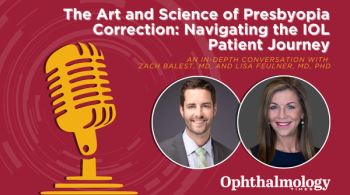
Operating Theater vs In-Clinic Intravitreal Injections
Expert ophthalmologists discuss the differences between in-clinic intravitreal injections and operating theaters utilizing intravitreal injections.
Episodes in this series

Nadia K. Waheed, MD, MPH: Let’s move a little bit toward operating theater vs. clinic. Some publications have talked about the safety of doing injections in the operating theater. Are there certain situations in which you consider doing injections in the operating theater, or are certain situations in which it might be all to do operating theater-based injections as opposed to clinic-based injections?
David M. Brown, MD: I really don't do any, except at the end of an endophthalmitis for fungus or what have you. Certainly, if you have a child or a child with a disability that can’t hold still, then you have to do those under examiner anesthesia, but typically it’s well tolerated, and even among 7- or 8-year-olds, as long as they’re cooperative.
Nadia K. Waheed, MD, MPH: It looks like the bulk of your injections are in a clinic, in the chair in which you would possibly see the patient, not necessarily even in a procedure room.
David M. Brown, MD: We try to keep injections to only a few rooms, so you can keep less traffic in and out. I think that if you had laminar flow, that would make sense. I think everything would help. But if your rates are 1 per 7,000, you’re going to have to do a study of 700,000 or something to try to even potentially see any kind of benefit.
Nadia K. Waheed, MD, MPH: Thus, pretty safe.
Transcript Edited for Clarity
Newsletter
Don’t miss out—get Ophthalmology Times updates on the latest clinical advancements and expert interviews, straight to your inbox.
















































